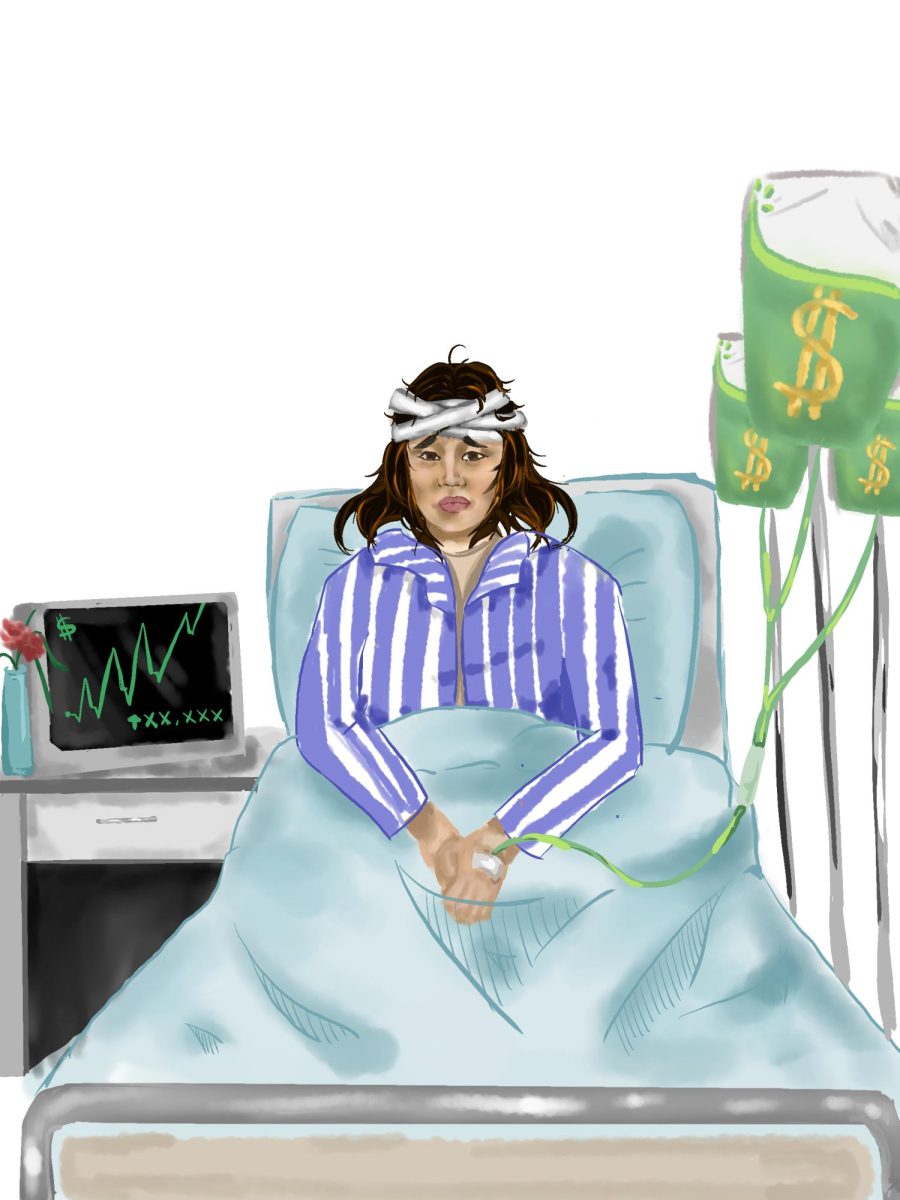When UnitedHealthcare CEO Brian Thompson was found dead in early December, shell casings with the words — “deny,” “defend,” and “depose” — were found near the crime scene according to the Associated Press. Five days later, on Dec. 9, 2024, a suspect was apprehended. His name: Luigi Mangione.
Mangione’s alleged actions come during a period of tension between the healthcare system and the people. According to a Gallup poll conducted a few months ago, only 19 percent of Americans are satisfied with healthcare costs.
For some, Mangione’s alleged actions were symbolic of the hardships within the healthcare system, and he received abundant support. From look-alike contests in the middle of New York City to fanfiction on “Archive of Our Own” or billboards saying, “Free Luigi Mangione/He’s a Hero” 3,000 miles away in California’s Inland Empire, he has received praise in numerous forms.
Others, like Palo Alto High School junior Graham Vaughan, say that Mangione’s alleged actions are not the right way to bring attention to issues in healthcare, despite it being arguably justified.
“I feel like there’s so many people that have had their lives completely ruined due to what these health insurance companies are doing,” Vaughan said. “So [the killing of Brian Thompson] is somewhat justified, but I don’t personally agree that assassinating someone is the right way to draw attention to something like this, but it’s definitely one of the most effective ways.”
Rachel Borovina, a pediatrician at the San Mateo County Public Health Department, points out another consequence of rising tensions with the healthcare system after COVID-19, and Mangione’s alleged actions. Her opinion does not necessarily reflect that of San Mateo County.
“A notable point is there has been a steady increase of threats of violence to all members of the healthcare team staff over the past several years, including in the Bay Area,” Borovina said. “The front office staff, which have the initial contact with the public, and the emergency room staff are in particularly higher risk areas.”
At the healthcare system, where Borovina works, metal detectors or security with wands were put into place during COVID-19, and since then they have remained due to increasing discontent with the healthcare system and hospitals.
Although the morality of Mangione’s alleged actions can be argued, there is no doubt that it brought the American healthcare system and its many flaws to the forefront of people’s minds.
According to the Peter G. Peterson Foundation, in 2022, Americans spent an estimated $12,742 per person on healthcare, the highest healthcare costs per capita across similar countries. Borovina saw the consequences of these prices firsthand in a recent encounter she had with a family who couldn’t afford vaccines.
Borovina says that this family should never have been put into this situation in the first place.
“They were English-speaking, documented, you name it,” Borovina said. “There’s no reason why this middle-class family should be struggling like this to decide on whether or not they’re going to vaccinate their infants.”
This represents part of a greater problem with healthcare costs for middle-class families. According to Borovina, it’s due to the fractured healthcare system.
“The lack of a national coordination of healthcare services and funding has led to a fractured system which spends on average more than double in healthcare expenditures per person compared to similar international countries while providing worse health outcomes,” Borovina said.
Baldeep Singh, a clinical professor at Stanford, medical director of the Samaritan House, and medical co-director of the Pacific Free Clinic, also says that the high costs are due to the privatization of healthcare.
“The reason that it’s so expensive in the United States is because we have private health insurance, so that’s Blue Cross and UnitedHealthcare and Health Net, and they take 15 to 20 percent off the top, so they add a huge layer of administrative private costs,” Singh said.
This system has also inadvertently affected hospitals themselves. Many low-income communities are unable to afford private healthcare and therefore rely on federal aid programs like Medi-Cal or Obamacare, which don’t fund hospitals very well.
“Stanford [hospital] is doing so well because we have a lot of patients that have money and good insurance,” Singh said. “What doesn’t pay well is Medi-Cal because they [families and workers] don’t have a good job [that] covers their health insurance. They can get Obamacare, but Obamacare does not pay hospitals very much, so most of those hospitals are barely making it.”
As a result, hospitals are struggling to stay afloat with a Kauffman Hall report in 2023 finding that one in five California hospitals are at risk of closing.
Still, Singh believes that the current healthcare situation isn’t all negative. With the addition of the Affordable Care Act and Obamacare, major progress has been made to insure all Americans.
“The uninsured rate has been cut in half,” Singh said. “It went from 20 percent to 10 percent. It’s a huge improvement, probably the biggest improvement in healthcare expansion in a generation.”
For students interested in helping, Lavanya Gupta the president of ClinicConnects, a UC-Berkely student club that distributes health supplies to the homeless, believes that actively searching for volunteering opportunities is the best way students can help.
“Social advocacy, volunteering, is the best way to help,” Gupta said.
